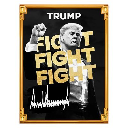-
 Bitcoin
Bitcoin $85,697.3844
1.57% -
 Ethereum
Ethereum $1,638.9615
0.39% -
 Tether USDt
Tether USDt $0.9999
0.00% -
 XRP
XRP $2.1668
2.02% -
 BNB
BNB $589.6303
0.00% -
 Solana
Solana $132.3928
-0.10% -
 USDC
USDC $1.0000
-0.01% -
 TRON
TRON $0.2521
-1.70% -
 Dogecoin
Dogecoin $0.1597
-2.28% -
 Cardano
Cardano $0.6439
0.85% -
 UNUS SED LEO
UNUS SED LEO $9.4287
0.41% -
 Chainlink
Chainlink $12.6833
-0.80% -
 Avalanche
Avalanche $20.0262
0.05% -
 Stellar
Stellar $0.2425
-0.03% -
 Toncoin
Toncoin $2.9684
4.14% -
 Sui
Sui $2.2145
-3.52% -
 Hedera
Hedera $0.1672
0.05% -
 Shiba Inu
Shiba Inu $0.0...01194
-1.99% -
 Bitcoin Cash
Bitcoin Cash $333.3345
-1.23% -
 Litecoin
Litecoin $77.8594
0.59% -
 Polkadot
Polkadot $3.7096
1.64% -
 Hyperliquid
Hyperliquid $16.3941
4.91% -
 Dai
Dai $1.0000
0.01% -
 Bitget Token
Bitget Token $4.3126
1.07% -
 Pi
Pi $0.7411
-1.42% -
 Ethena USDe
Ethena USDe $0.9991
0.02% -
 Monero
Monero $213.9141
2.70% -
 Uniswap
Uniswap $5.4003
-0.80% -
 OKB
OKB $52.2630
-1.39% -
 Pepe
Pepe $0.0...07415
0.89%
How does NFT smart contract work?
NFT smart contracts, coded primarily in Solidity, automate agreements on blockchains, managing NFT creation, transfer, and metadata (often stored via IPFS) securely according to ERC-721 or ERC-1155 standards, minimizing gas costs through optimization techniques.
Feb 28, 2025 at 07:24 am
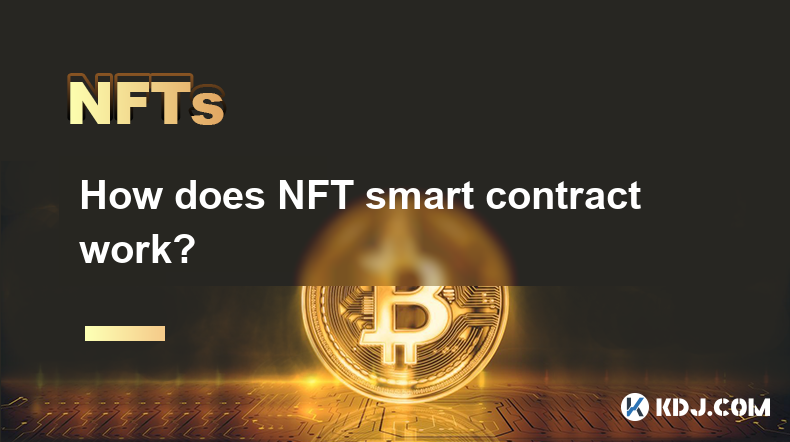
How Does an NFT Smart Contract Work?
Key Points:
- Understanding Smart Contracts: A deep dive into the fundamental nature of smart contracts, their role in blockchain technology, and their inherent security features. We will explore how they operate autonomously based on pre-defined conditions.
- The Role of Solidity: An examination of Solidity, the primary programming language used for developing NFT smart contracts, including its syntax, data structures, and functionalities relevant to NFT creation and management.
- Deconstructing an NFT Smart Contract: A step-by-step breakdown of the typical components found within an NFT smart contract, including functions for minting, transferring, burning, and accessing metadata. We will explore various architectural patterns and design considerations.
- ERC-721 and ERC-1155 Standards: A detailed comparison of the two most prevalent NFT standards, highlighting their differences in functionality and use cases. We'll analyze how these standards dictate the core functionality implemented in smart contracts.
- Security Considerations in NFT Smart Contracts: An in-depth analysis of common vulnerabilities in NFT smart contracts and best practices for writing secure and auditable code. This includes discussions of reentrancy attacks, gas optimization issues, and the importance of formal verification.
- Gas Optimization and Efficiency: Exploring techniques for optimizing gas consumption in NFT smart contracts, minimizing transaction costs, and enhancing overall efficiency. We will examine strategies for reducing code complexity and improving performance.
- Metadata and IPFS Integration: An explanation of how NFT metadata (images, descriptions, etc.) is stored and accessed using decentralized storage solutions like IPFS, ensuring immutability and accessibility. We will discuss the challenges and best practices related to off-chain data management.
- Understanding Smart Contracts:
Smart contracts are self-executing contracts with the terms of the agreement between buyer and seller being directly written into lines of code. They are stored on a blockchain, making them transparent, immutable, and secure. This eliminates the need for intermediaries, such as lawyers or escrow agents, significantly reducing transaction costs and increasing efficiency. The execution of a smart contract is triggered automatically when predefined conditions are met. This automation is a key feature that distinguishes smart contracts from traditional contracts. The code itself dictates the actions to be taken, ensuring that the agreement is executed fairly and accurately without any possibility of manipulation or interference. Security is paramount in smart contracts. They are designed to be tamper-proof, meaning that once deployed on a blockchain, the code cannot be altered without consensus from the network. This immutability protects the integrity of the contract and provides a high level of trust. The decentralized nature of blockchain further enhances security, as no single entity controls the execution of the contract. Smart contracts are not merely about automating agreements; they are about building trust and transparency in a digital world. Their ability to execute complex logic and manage digital assets makes them a powerful tool for various applications, including supply chain management, decentralized finance (DeFi), and, importantly, non-fungible tokens (NFTs). The functionality and capabilities of a smart contract are entirely determined by the code written by the developer. This requires a thorough understanding of the programming language used and careful consideration of all possible scenarios and edge cases. The development process involves meticulous planning, rigorous testing, and thorough auditing to ensure the contract operates as intended and is resistant to vulnerabilities.
- The Role of Solidity:
Solidity is the dominant programming language for developing smart contracts on the Ethereum blockchain, and by extension, a significant portion of NFT smart contracts. It's a statically-typed, object-oriented language specifically designed for building secure and reliable smart contracts. Its syntax is influenced by languages like C++, Python, and JavaScript, making it relatively accessible to programmers with experience in these languages. The static typing feature in Solidity allows for early detection of errors during compilation, enhancing the overall security and reliability of the resulting smart contracts. Solidity provides various data structures, such as arrays, mappings, and structs, enabling developers to represent complex data efficiently. Functions are the building blocks of Solidity smart contracts, encapsulating specific functionalities. These functions can be accessed and executed by users interacting with the contract. For NFT smart contracts, key functions include mint, transfer, burn, and functions to retrieve metadata associated with the NFTs. Solidity’s ability to interact with other contracts and external data sources is crucial for creating sophisticated NFT applications. For instance, it can integrate with decentralized storage solutions like IPFS to store and retrieve NFT metadata off-chain, reducing the size and cost of on-chain storage. Solidity also includes modifiers, which are used to add extra logic before or after a function is executed. This feature is useful for enforcing access control and implementing other security measures. Understanding Solidity's features, including inheritance, interfaces, and events, is vital for designing well-structured and maintainable NFT smart contracts. Continuous learning and staying updated with the latest Solidity updates and best practices are essential for developers working in this field.
- Deconstructing an NFT Smart Contract:
A typical NFT smart contract comprises several key functions and data structures. The mint function is crucial for creating new NFTs. It takes parameters such as the token ID, metadata URI, and the recipient address. The transfer function allows the owner to transfer ownership of an NFT to another address. This function typically involves checks to ensure that the sender has ownership of the NFT and sufficient authorization. The burn function permanently removes an NFT from circulation, typically used for destroying unwanted or damaged NFTs. The ownerOf function retrieves the current owner's address for a given token ID. balanceOf returns the number of NFTs owned by a specific address. getApproved and isApprovedForAll functions handle approvals for transfers, enabling users to grant permission to others to transfer their NFTs. The contract also stores essential data structures, such as a mapping from token ID to owner address, a mapping from owner address to their token balances, and a mapping for approved operators. Often, NFT smart contracts utilize events to log important actions, such as minting, transfer, and approval. These events provide transparency and allow external applications to track NFT activity. Error handling is a critical aspect of smart contract development. Well-structured error handling mechanisms can prevent unexpected behavior and vulnerabilities. Gas optimization is also crucial for minimizing transaction costs. Efficient code and data structures can significantly reduce the gas consumption associated with interacting with the smart contract. Advanced NFT smart contracts might incorporate additional features like royalty mechanisms, allowing creators to receive a percentage of future sales, or they might implement access control using roles to manage different levels of permissions.
- ERC-721 and ERC-1155 Standards:
ERC-721 and ERC-1155 are two prominent Ethereum Request for Comments (ERCs) that define standards for non-fungible tokens. ERC-721 is the older and more widely adopted standard, representing a single, unique token. Each ERC-721 token is distinct and indivisible. Think of it as representing a single piece of digital art or a unique collectible item. The ERC-721 standard defines functions for minting, transferring, and managing individual tokens. Its simplicity and straightforward nature have contributed to its popularity. However, its limitations become apparent when dealing with multiple types of tokens or when needing to manage batches of tokens efficiently. ERC-1155, a more recent standard, addresses these limitations. It provides a more flexible and versatile approach to representing NFTs. ERC-1155 allows for the representation of both single and multiple token types within a single contract. This makes it ideal for games, where multiple in-game items might share similar characteristics but have unique attributes. ERC-1155 also supports batch transfers and minting, significantly improving efficiency compared to ERC-721, especially when dealing with large numbers of tokens. The choice between ERC-721 and ERC-1155 depends on the specific requirements of the NFT project. ERC-721 is suitable for projects with unique, individual items, while ERC-1155 is better suited for projects involving multiple token types or requiring efficient batch operations. Both standards provide a solid foundation for building NFT smart contracts, offering a balance between functionality and security.
- Security Considerations in NFT Smart Contracts:
Security is paramount in smart contract development, particularly in the context of NFTs. A vulnerability in an NFT smart contract can lead to significant financial losses or the compromise of valuable digital assets. One common vulnerability is reentrancy. A reentrancy attack occurs when a malicious contract calls back into the NFT contract during a function execution, potentially manipulating the contract's state and exploiting its logic. Robust access control is crucial to prevent unauthorized access and manipulation of the contract. Proper authorization checks should be implemented for all functions that modify the contract's state. Gas optimization, while important for cost efficiency, should not compromise security. Overly complex or inefficient code can introduce vulnerabilities. Thorough code reviews and audits are essential to identify and address potential vulnerabilities before deployment. Formal verification techniques can provide mathematical proof of the contract's correctness and security. These techniques help to identify subtle bugs that might be missed during manual code reviews. The use of established security best practices and libraries can reduce the risk of introducing vulnerabilities. Regular security updates and patching are crucial to address newly discovered vulnerabilities. Developers should stay informed about known security flaws and promptly update their contracts to mitigate these risks. Collaborating with security experts during the development process can significantly improve the security posture of the NFT smart contract.
- Gas Optimization and Efficiency:
Gas optimization in NFT smart contracts is critical for minimizing transaction costs and enhancing user experience. Gas is the computational unit used on the Ethereum blockchain to measure the cost of executing transactions. High gas consumption can result in expensive transactions, deterring users from interacting with the contract. One key aspect of gas optimization is efficient code writing. Avoiding unnecessary computations and using optimized data structures can significantly reduce gas consumption. The use of appropriate data types can also impact gas costs. Choosing the right data type based on the expected values can minimize storage space and improve efficiency. Smart contract design plays a crucial role in gas optimization. Modular design and the separation of concerns can lead to more efficient code. Careful consideration of the function calls and the data structures used can further reduce gas usage. Batching operations, such as batch minting or batch transfers, can significantly reduce gas costs compared to performing individual operations. Using libraries and pre-compiled contracts can improve efficiency by leveraging optimized code. Utilizing existing libraries for common functionalities can reduce the amount of code that needs to be written, leading to reduced gas consumption. Careful analysis of the gas consumption profile of the contract can help pinpoint areas for improvement. Profiling tools can provide insights into the gas usage of individual functions and data structures. By identifying the most gas-intensive parts of the contract, developers can focus their optimization efforts on these areas.
- Metadata and IPFS Integration:
NFT metadata, such as images, descriptions, and other attributes, is typically stored off-chain using decentralized storage solutions like IPFS (InterPlanetary File System). Storing metadata on-chain would be incredibly expensive and inefficient, especially for large files. IPFS is a distributed file system that allows for the storage and retrieval of data across a peer-to-peer network. This decentralized approach enhances the resilience and accessibility of the metadata. When an NFT is minted, its metadata URI is stored on the blockchain. This URI points to the location of the metadata on IPFS. When a user wants to view the metadata associated with an NFT, they access the URI from the blockchain and retrieve the data from IPFS. This separation of on-chain data (token ID, owner, metadata URI) and off-chain data (actual metadata) improves scalability and cost-effectiveness. However, relying on off-chain storage introduces some challenges. The availability and integrity of the data depend on the availability of the IPFS nodes. While IPFS is designed to be decentralized and robust, there's always a risk of data loss or inaccessibility if the nodes storing the metadata become unavailable. To mitigate this risk, developers can employ strategies such as pinning the metadata to multiple IPFS nodes or using content delivery networks (CDNs) to improve access speed and reliability. Proper error handling is crucial to ensure that the application gracefully handles cases where the metadata is not accessible. The integration of IPFS with smart contracts requires careful consideration of the data format and the interaction between the contract and the IPFS network. Using established libraries and tools can simplify the integration process and enhance the security and reliability of the metadata retrieval mechanism.
FAQs:
Q: What is a smart contract in the context of NFTs?
A: In the NFT world, a smart contract is a self-executing program stored on a blockchain that automatically enforces the terms of an agreement. It governs the creation, ownership, and transfer of NFTs. This eliminates the need for intermediaries and ensures transparency and security.
Q: What programming language is commonly used for NFT smart contracts?
A: Solidity is the most widely used programming language for building NFT smart contracts on the Ethereum blockchain. Its features make it suitable for creating secure and reliable contracts that manage digital assets.
Q: What are ERC-721 and ERC-1155?
A: ERC-721 and ERC-1155 are technical standards defining how NFTs are implemented on the Ethereum blockchain. ERC-721 is suitable for single, unique tokens, while ERC-1155 supports both single and multiple token types within a single contract, improving efficiency for large-scale projects.
Q: How is NFT metadata stored and accessed?
A: NFT metadata (images, descriptions, etc.) is usually stored off-chain using decentralized storage like IPFS. The metadata URI, pointing to the location on IPFS, is stored on-chain. Users access the metadata by retrieving the URI from the smart contract and fetching the data from IPFS.
Q: What are the common security concerns related to NFT smart contracts?
A: Common security risks include reentrancy attacks (where malicious contracts exploit vulnerabilities), improper access control, and vulnerabilities stemming from inefficient or poorly written code. Thorough audits and security best practices are vital.
Q: How can I optimize my NFT smart contract for gas efficiency?
A: Gas optimization involves writing efficient code, using appropriate data types, employing batch operations, leveraging libraries, and carefully designing the contract's structure to minimize computational costs. Analyzing gas usage through profiling tools can identify areas for improvement.
Q: What is the role of IPFS in NFT smart contracts?
A: IPFS (InterPlanetary File System) is a decentralized storage solution often used to store NFT metadata off-chain. This reduces the cost and complexity of storing large files directly on the blockchain while ensuring accessibility and resilience.
Disclaimer:info@kdj.com
The information provided is not trading advice. kdj.com does not assume any responsibility for any investments made based on the information provided in this article. Cryptocurrencies are highly volatile and it is highly recommended that you invest with caution after thorough research!
If you believe that the content used on this website infringes your copyright, please contact us immediately (info@kdj.com) and we will delete it promptly.
- Ethereum (ETH) Price Prediction: ETH Up for Rally As Buying Signal Flashes
- 2025-04-15 18:00:12
- XRP Price Prediction: Technical Analysis and Market Momentum
- 2025-04-15 18:00:12
- Toncoin (TON) Is in the Spotlight as Several On-Chain and Technical Indicators Suggest a Possible Rally
- 2025-04-15 17:55:15
- MAGACOINFINANCE – Viral Momentum With Real ROI
- 2025-04-15 17:55:15
- When Peter Brandt speaks, the markets listen. This trading veteran, active since the 1970s, dropped a bombshell
- 2025-04-15 17:55:13
- KiloEx, a decentralized exchange (DEX) for trading perpetual futures, was hit by a sophisticated attack
- 2025-04-15 17:55:13
Related knowledge
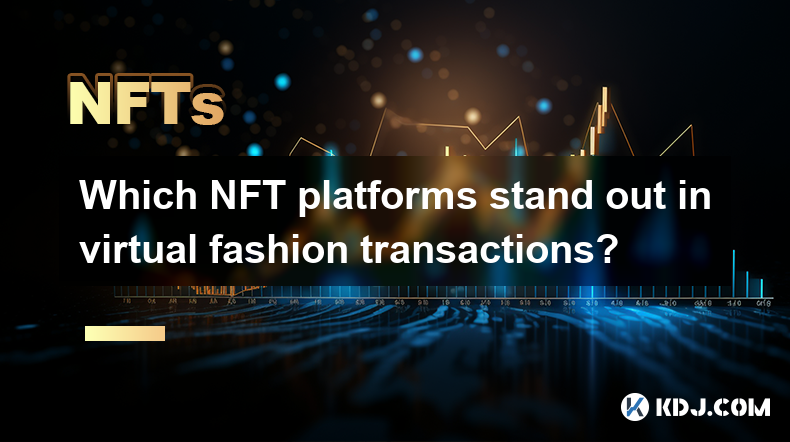
Which NFT platforms stand out in virtual fashion transactions?
Apr 15,2025 at 02:29am
In the dynamic world of cryptocurrency and digital assets, Non-Fungible Tokens (NFTs) have carved out a significant niche, particularly in the realm of virtual fashion. As the demand for unique digital wearables and accessories grows, several NFT platforms have emerged as leaders in facilitating these transactions. This article explores the standout NFT...
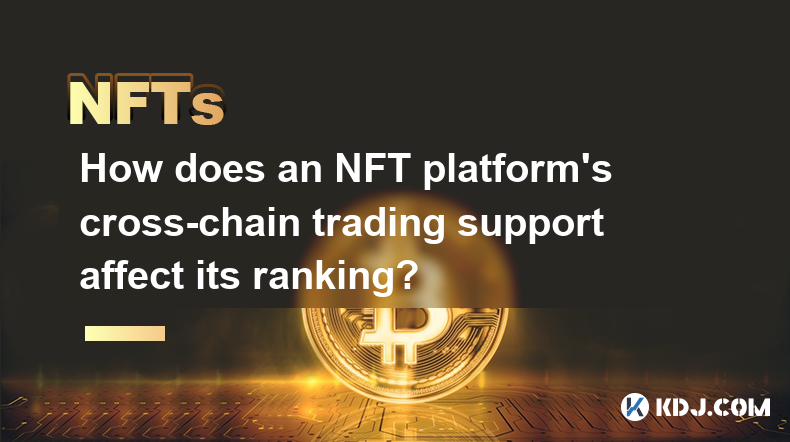
How does an NFT platform’s cross-chain trading support affect its ranking?
Apr 14,2025 at 04:49pm
The impact of an NFT platform's cross-chain trading support on its ranking is a multifaceted topic that delves into the technical capabilities, user experience, and market dynamics of the platform. Cross-chain trading refers to the ability of an NFT platform to facilitate the exchange of non-fungible tokens across different blockchain networks. This fea...
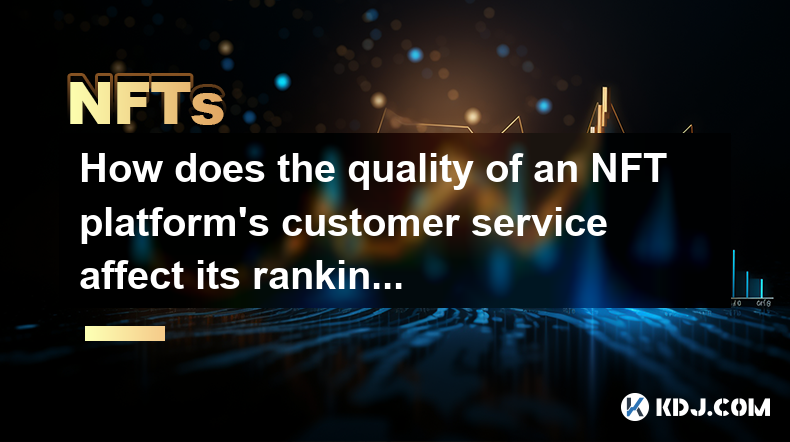
How does the quality of an NFT platform’s customer service affect its ranking?
Apr 15,2025 at 05:49am
The quality of an NFT platform's customer service plays a crucial role in determining its ranking within the competitive landscape of the cryptocurrency and NFT market. Customer service is often the bridge between a platform and its users, directly impacting user satisfaction, trust, and overall experience. This article delves into how different aspects...
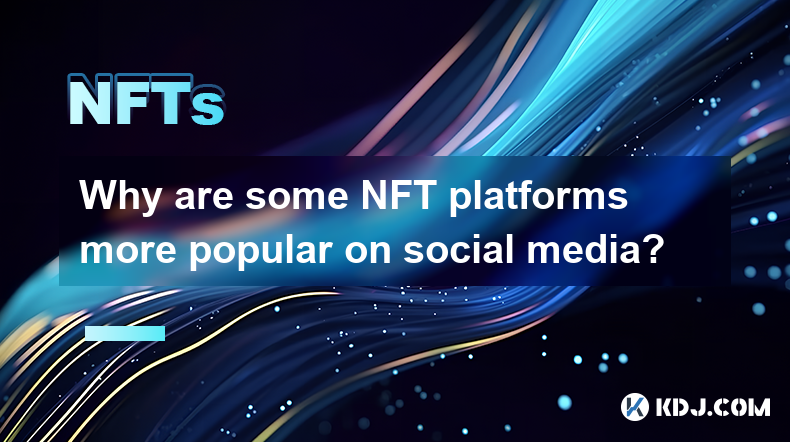
Why are some NFT platforms more popular on social media?
Apr 15,2025 at 01:00am
The popularity of NFT platforms on social media can be attributed to a variety of factors that influence their visibility, engagement, and overall appeal to users. Understanding these factors can provide insights into why certain platforms capture more attention and interaction on social media channels. User Experience and InterfaceUser experience (UX) ...
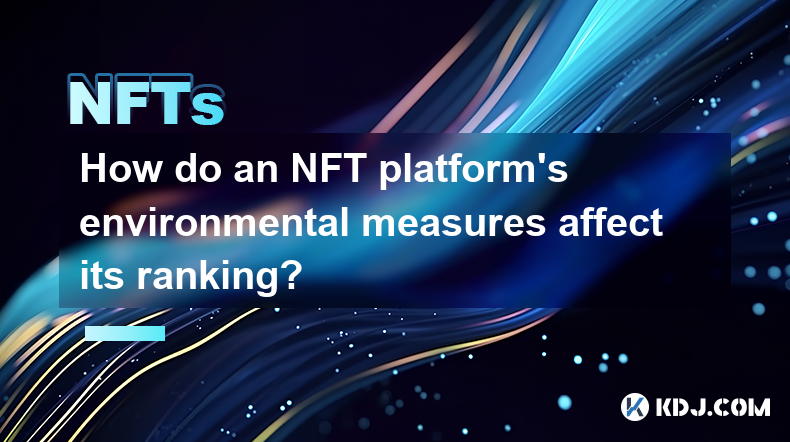
How do an NFT platform’s environmental measures affect its ranking?
Apr 15,2025 at 02:14am
The impact of an NFT platform's environmental measures on its ranking is a topic of growing importance within the cryptocurrency circle. As the digital art and collectibles market grows, so does the scrutiny over the environmental footprint of the blockchain technologies that support these platforms. This article will delve into how these environmental ...
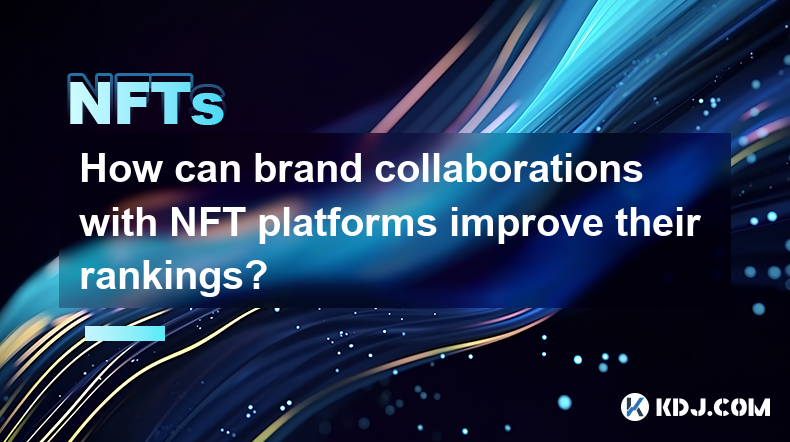
How can brand collaborations with NFT platforms improve their rankings?
Apr 15,2025 at 01:35am
Brand collaborations with NFT platforms have become increasingly popular in the cryptocurrency circle, offering a unique way to enhance visibility and rankings. By leveraging the strengths of both brands and NFT platforms, these collaborations can drive engagement, increase user base, and ultimately improve rankings on various metrics. In this article, ...

Which NFT platforms stand out in virtual fashion transactions?
Apr 15,2025 at 02:29am
In the dynamic world of cryptocurrency and digital assets, Non-Fungible Tokens (NFTs) have carved out a significant niche, particularly in the realm of virtual fashion. As the demand for unique digital wearables and accessories grows, several NFT platforms have emerged as leaders in facilitating these transactions. This article explores the standout NFT...

How does an NFT platform’s cross-chain trading support affect its ranking?
Apr 14,2025 at 04:49pm
The impact of an NFT platform's cross-chain trading support on its ranking is a multifaceted topic that delves into the technical capabilities, user experience, and market dynamics of the platform. Cross-chain trading refers to the ability of an NFT platform to facilitate the exchange of non-fungible tokens across different blockchain networks. This fea...

How does the quality of an NFT platform’s customer service affect its ranking?
Apr 15,2025 at 05:49am
The quality of an NFT platform's customer service plays a crucial role in determining its ranking within the competitive landscape of the cryptocurrency and NFT market. Customer service is often the bridge between a platform and its users, directly impacting user satisfaction, trust, and overall experience. This article delves into how different aspects...

Why are some NFT platforms more popular on social media?
Apr 15,2025 at 01:00am
The popularity of NFT platforms on social media can be attributed to a variety of factors that influence their visibility, engagement, and overall appeal to users. Understanding these factors can provide insights into why certain platforms capture more attention and interaction on social media channels. User Experience and InterfaceUser experience (UX) ...

How do an NFT platform’s environmental measures affect its ranking?
Apr 15,2025 at 02:14am
The impact of an NFT platform's environmental measures on its ranking is a topic of growing importance within the cryptocurrency circle. As the digital art and collectibles market grows, so does the scrutiny over the environmental footprint of the blockchain technologies that support these platforms. This article will delve into how these environmental ...

How can brand collaborations with NFT platforms improve their rankings?
Apr 15,2025 at 01:35am
Brand collaborations with NFT platforms have become increasingly popular in the cryptocurrency circle, offering a unique way to enhance visibility and rankings. By leveraging the strengths of both brands and NFT platforms, these collaborations can drive engagement, increase user base, and ultimately improve rankings on various metrics. In this article, ...
See all articles

















